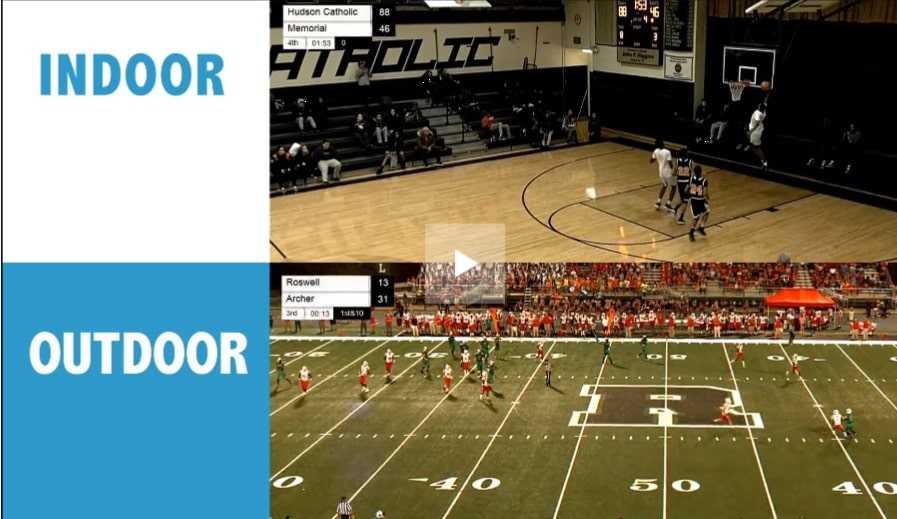
The March 1 start of the much-delayed, highly anticipated, 2020-21 high school sports season is fast approaching.
For most of those who want to attend contests, though, state restrictions on gathering sizes due to the COVID-19 crisis will keep them from doing so. For parents, in particular, it's a bittersweet situation.
“It's a tough year for them,” Oregon City athletic director Andrew Jones said. “A lot of parents have been waiting for this, and it's a hard reality to say, 'Man, I can't come and watch my son or daughter perform as a senior.'”
Recognizing the glaring need, many schools are stepping up to fill the void with technology. Some will be live-streaming contests for the first time, while others that have been using the medium are expanding their efforts to include more sports and more levels.
Oregon City, for example, has stacked its schedule to play as many football, volleyball and soccer games as possible before live-streaming cameras at its stadium and main gym. That means playing all three volleyball levels back-to-back-to-back.
“I think it's an obligation that we have,” Jones said. “Since we can't let them into the games, we owe this to the parents who have been the supporters, especially for the seniors, for the last four years. To be able to give something back to them to watch is the least we can do.”
In recent years, many schools began live-streaming contests on YouTube and Facebook Live as well as through internet broadcasters such as TableRockSports.net and OregonSportsBeat.com.
Schools also took advantage of a deal through the NFHS Network, which offered Pixellot Systems streaming cameras on a buy-one-get-one-free basis with an agreement to provide live content for the national outlet. The live streams are available by monthly and annual subscription.
The NFHS Network sweetened the deal about a year ago to provide two free cameras – automated production units valued at about $5,000 each – along with the agreement.
Many Oregon schools jumped at the chance to use the cameras. South Albany, Dallas, South Salem, McNary and Imbler are among the schools that are in the process of installing the cameras this week.
“This is one of those times when you look at all levels of technology to service those who support you the most,” OSAA assistant executive director Kyle Stanfield said. “It's a really cool system. It also works in the benefit of the school because they can get sponsor money. There are a bunch of ways they can monetize themselves.”
Sherwood athletic director Randy Ramp can vouch for the Pixellot system. Sherwood started using the cameras at its stadium and gym about five years ago.
“It's been a great system. I've never heard a complaint about it,” Ramp said. “It's been awesome for relatives, family that's out of town to watch games. This year, obviously, there's going to be a lot of people that want to watch the games. Hopefully it works out well for everybody this year.”
Jones has had a positive experience with the Pixellot system at Oregon City. The high school installed cameras at its stadium and gym in Sept. 2019.
“It is so easy,” Jones said. “I just have to go in and type in the start time and end time, and the cameras turn on and off automatically. They've got some great software that follows the ball. I don't know how they do it. It follows it pretty seamlessly.”
Subscriptions for NFHS Network are $10.99 monthly or $69.99 annually. The fee allows for full access to live regular season and postseason events as well as those available on-demand.
Oregon City is among the schools that opted to pay a licensing fee to NFHS Network this year to allow parents to watch for free. The licensing fee was reduced from $3,000 to $1,500 this year.
“It's very reasonable,” Jones said. “That $1,500 is really not much considering that in a week's time, we might have five home games between volleyball, soccer and football. It's a huge benefit for our parents. They can just log right on and watch.”
Jones said that Three Rivers League athletic directors reached a “gentleman's agreement” for each school to pay the licensing fee. The agreement will make content from other Three Rivers venues available to all league parents.
“We can share it among each other,” Jones said. “Since we can't have parents, we don't want parents to have to pay. With everything that's going on, the last thing we want to do is have them worry about money.”
Live streams from other schools – such as Sandy, Sheridan, Tillamook, Regis, Estacada and Hidden Valley – will be available on YouTube and Facebook Live.
Jesuit will continue live-streaming all events from its stadium and gyms on its JCTV YouTube channel. Central Catholic will broadcast its home football, volleyball and soccer games on its in-house Ram TV network, which can be accessed through the school website and on OregonSportsBeat.com.
Ram TV has become a staple for Central Catholic since its started more than a decade ago. It began on NFHS Network but moved to Oregon SportsBeat in 2015.
“People really like the production of it, the HD that it's produced in,” athletic director Laura Jaeger said. “They like our announcers. We feel like it's a quality product.”
Schools can enter broadcast information for contests on the OSAA website. A list of upcoming live-stream events is available at osaa.org/media.
Ultimately, a hardship from the pandemic could end up being a catalyst for increased exposure of high school sports.
“Hopefully, that bleeds into the future,” Stanfield said. “That only helps high school sports. It could catapult us forward in the technology standpoint of a school getting their broadcasts out there.”










